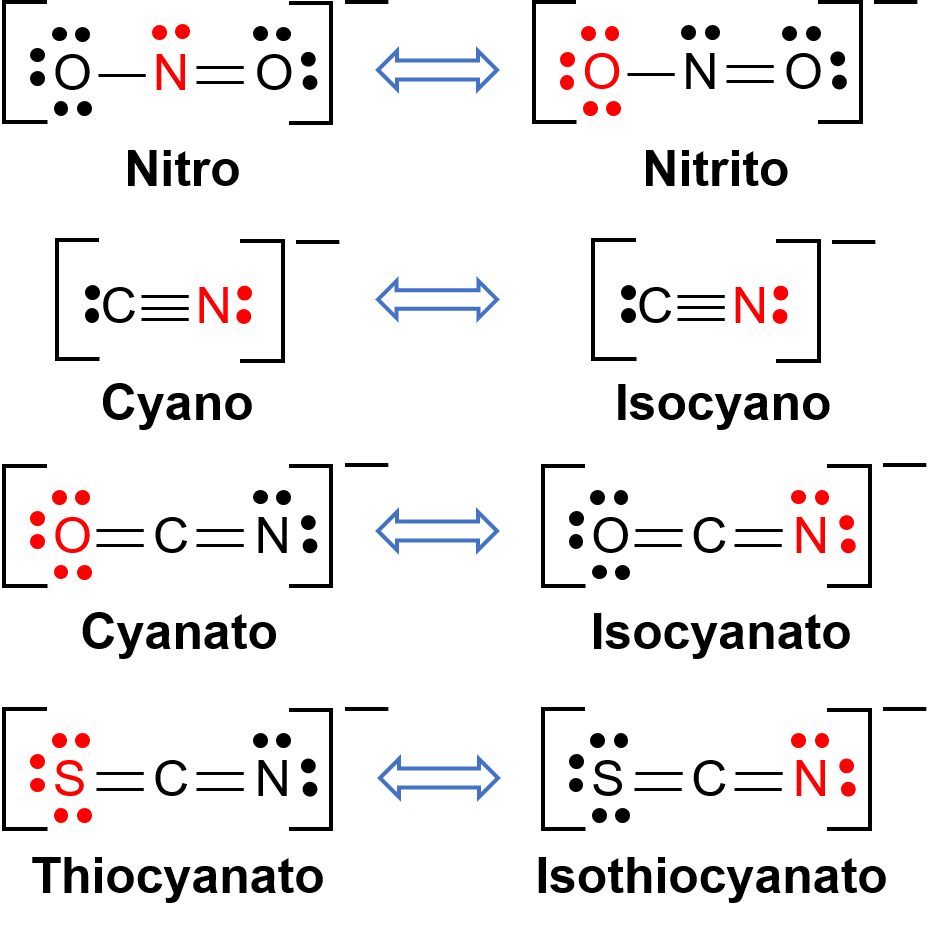20.5: 结构性异构
复合物中的异构
同分异构体是不同的化学物种,具有相同的化学公式。 配位化合物的结构异构可以分为两个子类别: Linkage 同分异构体和 coordination - sphere 同分异构体。
当配位化合物包含一条可通过两个不同原子与过渡金属中心绑定的配体时,就会出现联动装置同分异构体。 − , CN 的配体可以通过碳原子或氮原子结合。 − , SCN μ L 可以通过硫或氮原子结合。 图 1 显示了几种不同的配体,它们能够实现联动异构。 能够实现联动异构的配体的命名法取决于哪种捐赠原子是键合和金属离子。 − ,一条通过碳原子绑定的 CN L ä ligand 被称为细胞,而通过氮原绑定的相同配体被称为异氰野。

图 1. 能够形成联动异构的不同配体列表。 在配体分子中,红中的原子与中心金属原子结合。
当内部协调范围内的一条阴离子配体被外部协调范围内的反离子替代时,会发生协调球体同分异构体 (或电离同分异构体)。 两个协调球体同分异构体的一个简单示例是 [CoCl6][BR] 和 [CoCl5BR][CL]。
本文改编自 Openstax, 化学 2e, 第 19.2 节:过渡金属的配位化学。


